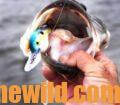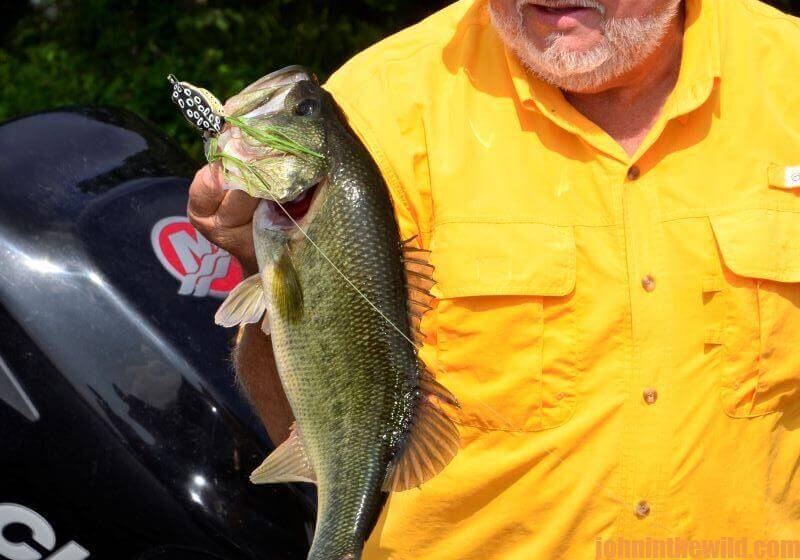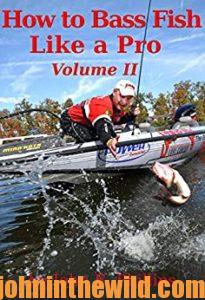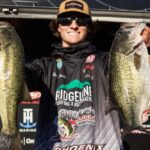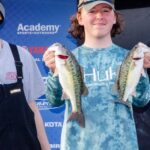
Editor’s Note: Captain Phillip Criss of Scottsboro, Alabama, has been a more-than a three-decade fishing buddy of mine for both bass and crappie – first at Miller’s Ferry and now at Lake Guntersville (www.guntersvilleal.org) on the Tennessee River in north Alabama. Anglers across the South know of Criss’s bass-fishing expertise. Since he’s retired from his day job to move to Guntersville to guide and fish, in mid-July, I went fishing with him. Criss gave me
 valuable information on fishing grassy lakes in hot weather. Guntersville is known as one of the top-5 bass-fishing lakes in the nation, primarily because of its grassy habitat that produces and grows bass.
valuable information on fishing grassy lakes in hot weather. Guntersville is known as one of the top-5 bass-fishing lakes in the nation, primarily because of its grassy habitat that produces and grows bass.
According to Captain Phillip Criss, “Guntersville Lake has a tremendous amount of back-water areas that were created when the lake was backed-up. There are a lot of underwater creeks at Guntersville, which is an extremely-fertile grassy lake. That fertility results in a tremendous number of shad being produced every year, and the bass feed on the shad.
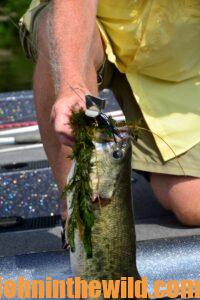
“Another major reason that Guntersville is such a great lake is it contains a major abundance of grass, including milfoil and hydrilla. This grass provides hiding places for young baitfish and ambush points for predator fish like bass. To a casual observer, every place on the lake looks like it should be holding bass. But the real key to fishing Guntersville and other grassy lakes is learning to use your depth finder and fishing underwater structure. The banks attract inexperienced bass fishermen. However, the underwater structure in the lake is where most of the big bass are caught. I know a lot of people think that bass move into deep water in the summertime, because the water is hot, and there’s cooler water down deep. But I’m convinced bass also go deep in the summer months to get the sun out of their eyes, so they can see and attack baitfish better. I’ve heard and read that the optimum temperature for bass is 92 degrees. I believe this is true, because that’s when I see the most bass chasing shad on the surface, and that’s the temperature at which the bass seem to bite best.
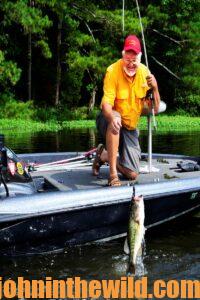
“When the grass gets really high in the lake, the bass will pull up and hold in the grass in 6 to 8 feet of water. That’s when punching holes in the grass with a heavy jig or fishing a frog across the top of the grass can really be productive. Another element of structure in the lake that many anglers never consider is the springs in the bottom of Guntersville. Those springs produce cool water in the summertime and warm water in the wintertime. Usually, there’s a ditch associated with the springs. When the springs were above water, the water running from the springs created trenches and ditches. In many sections of the lake, the ditches associated with the springs will be in the deepest water in an area. So, this is one of the reasons that ditches and underwater creeks seem to pay off best in the wintertime and the summertime. At this time of the year, I’ll use my side-scanning depth finder to look for structure. Often, I’ll fish that structure well away from the grass and the bank.”
To contact Captain Phillip Criss about fishing Lake Guntersville, call him at 205-461-5549, or email him at pdcriss@hotmail.com.
To learn more about bass fishing, check out John E. Phillips’ book, “How to Bass Fish Like a Pro, Volume II,” available in Kindle, print and Audible versions at https://www.amazon.com/gp/product/B08Z9W6VC1/ref=dbs_a_def_rwt_hsch_vapi_taud_p1_i9. To learn more about hunting for deer, since deer season starts soon in many states, check out John E. Phillips’ “Bowhunting Deer: Mossy Oak Pros Know Bucks and Bows” available in Kindle, print and Audible as of August, 2022, at (http://amzn.to/1QGvdQx) You may have to copy and paste these clicks into your browser. When you click on these books, notice on the left where Amazon says you can read and hear 10% of the books for free. On right side of the page and below the offer for a free Audible trial, you can click on Buy the Audible with one click.
Tomorrow: Realize That Frogs Catch Bass in Grass

